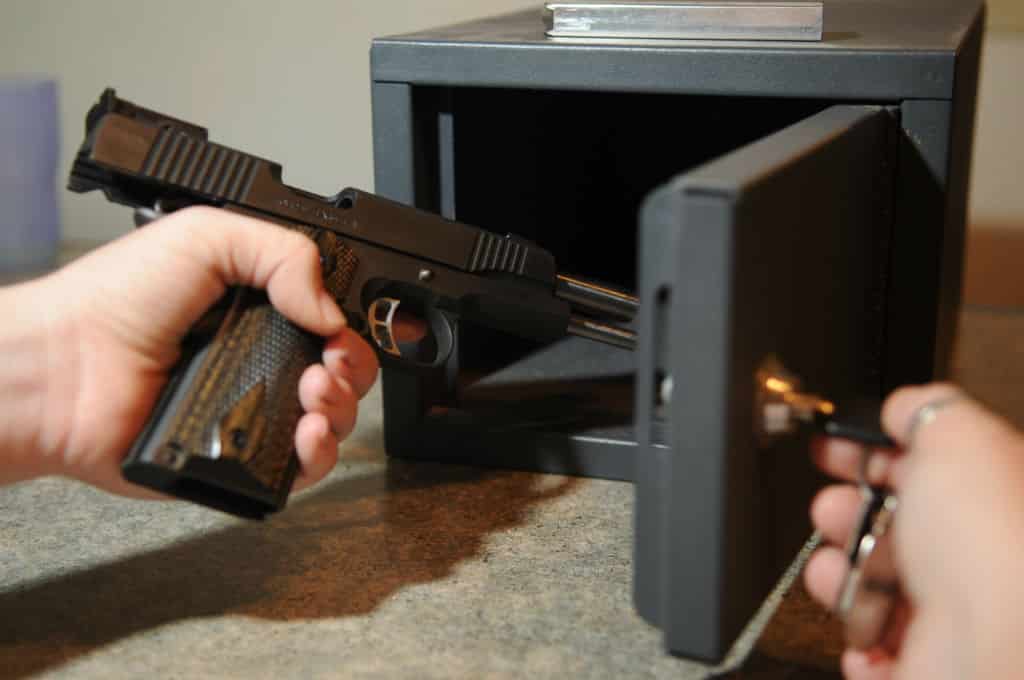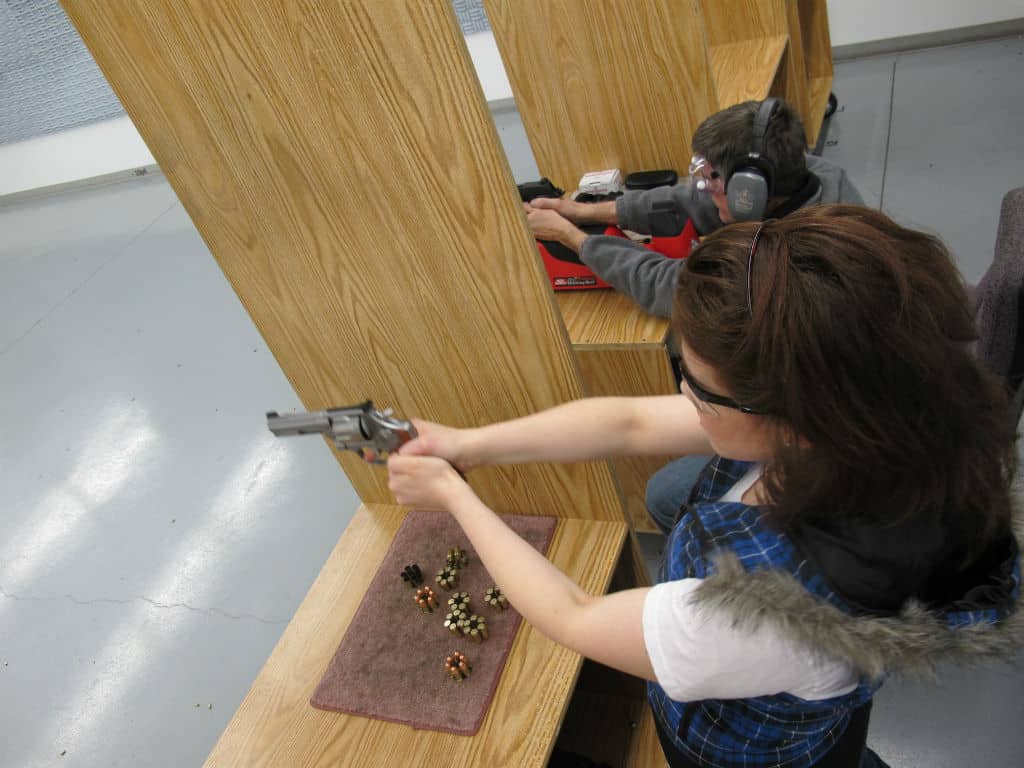Gun safety is not confined to a single thing a person does when it comes to carrying, storing or using firearms. It’s a holistic process and a philosophy of owning and carrying firearms. Gun safety isn’t a state of existence; it’s something a person has to practice all the time.
Safe Gun Storage

Shooting safety and carrying safety are all well and good, but one of the most overlooked or neglected aspects of gun safety is safe gun storage. It also happens to be one of the most vital aspects of firearm safety.
Granted, it is rather dry to talk about isn’t it? Kind of hard to go on YouTube and troll videos about improper storage because not too many people film and post how they store their guns. (I’m pretty sure there are people who just look for videos to post “poor trigger discipline!” comments.) But it’s also the thing you should pay the most attention to and especially if you’re a parent.
Safe storage means locking guns away, unloaded and out of easy access for anyone who isn’t supposed to access a firearm. Tiny hands should not be able to reach a gun and certainly not any ammunition.
Ever read a news report where a toddler gets a hold of someone’s gun and tragedy unfolds? A gun safe, even a cheap lockbox stored in a closet, could have prevented a great deal of those. Arguably, some school shootings could have been prevented with one as well.
Granted, there is also the need to have an easily-accessed firearm in case of home invasion or something along those lines, but that’s a discussion for another time.
Not only should a person have implements of safe storage, but also safe storage procedure in the home. A good rule of thumb is that if it isn’t on the hip or in the hand, it goes in the safe unloaded with a lock.
Safe Carrying And/Or Safe Concealed Carry

Safe concealed carry starts with two basic aspects. Retention and trigger safety.
By retention, I mean that the pistol needs to be secured to the person carrying, which requires two specific pieces of equipment. A good concealed carry holster with good holster retention – active or passive; it doesn’t matter which, it just needs to be adequate – and a good quality gun belt.
The former keeps a pistol in the holster when it’s inserted into it. The latter helps ensure that the pistol and the holster stay on the body. There are many good gun belts out there. There are nylon belts for the “tacticool” crowd and leather gun belts for the people who prefer a good piece of hide.
Trigger safety when carrying is paramount, especially given the number of accidental discharges attributed to plastic striker guns. It’s not that everyone should carry a double action gun or single action cocked and locked, more that details demand attention.
First, observe trigger discipline. Keep your finger off the trigger until ready to shoot and never handle your gun unless it’s absolutely necessary.
Second, keep the trigger guard free of obstruction. Clothing and anything else that gets inside the trigger guard can result in your poly gun going off when it’s not supposed to, so routinely make sure that nothing is anywhere near the holster or trigger guard at any time. Holster selection is critical in this regard; be sure select a carry holster that covers as much of the trigger guard as possible. Your carry gun should be properly inserted and as much of the trigger guard covered as can be every time you carry.
You should NEVER pocket carry a striker pistol without a pocket holster.
4 Laws Of Gun Safety Still Go A Long Way

Remember also the 4 Laws Of Gun Safety. A lot of people know them by heart and don’t really need to read them again. But, just in case anyone doesn’t know them:
- Treat All Guns As If They’re Loaded
- Keep Your Finger Off The Trigger Unless Ready To Shoot
- Never Point Your Gun At Something You Don’t Want Destroyed
- Be Sure Of Your Target And What’s Beyond It
You may quibble about exact wording in the comments, if you must.
The point being that these four rules about gun safety are a great starting point. A person should have them in mind at all times whilst carrying, handling or shooting firearms. However, they are only the beginning; the foundation on which to build.
Gun safety isn’t a state one achieves, it’s something a person practices – a process that they go through whenever they are doing anything involving firearms. That includes ensuring safe storage, safe carrying and safe operation.



![CZ 75B SA 9mm [PISTOL REVIEW]](https://www.usacarry.com/wp-content/uploads/2017/06/cz-75b-sa-9mm-review-75x75.jpg)





